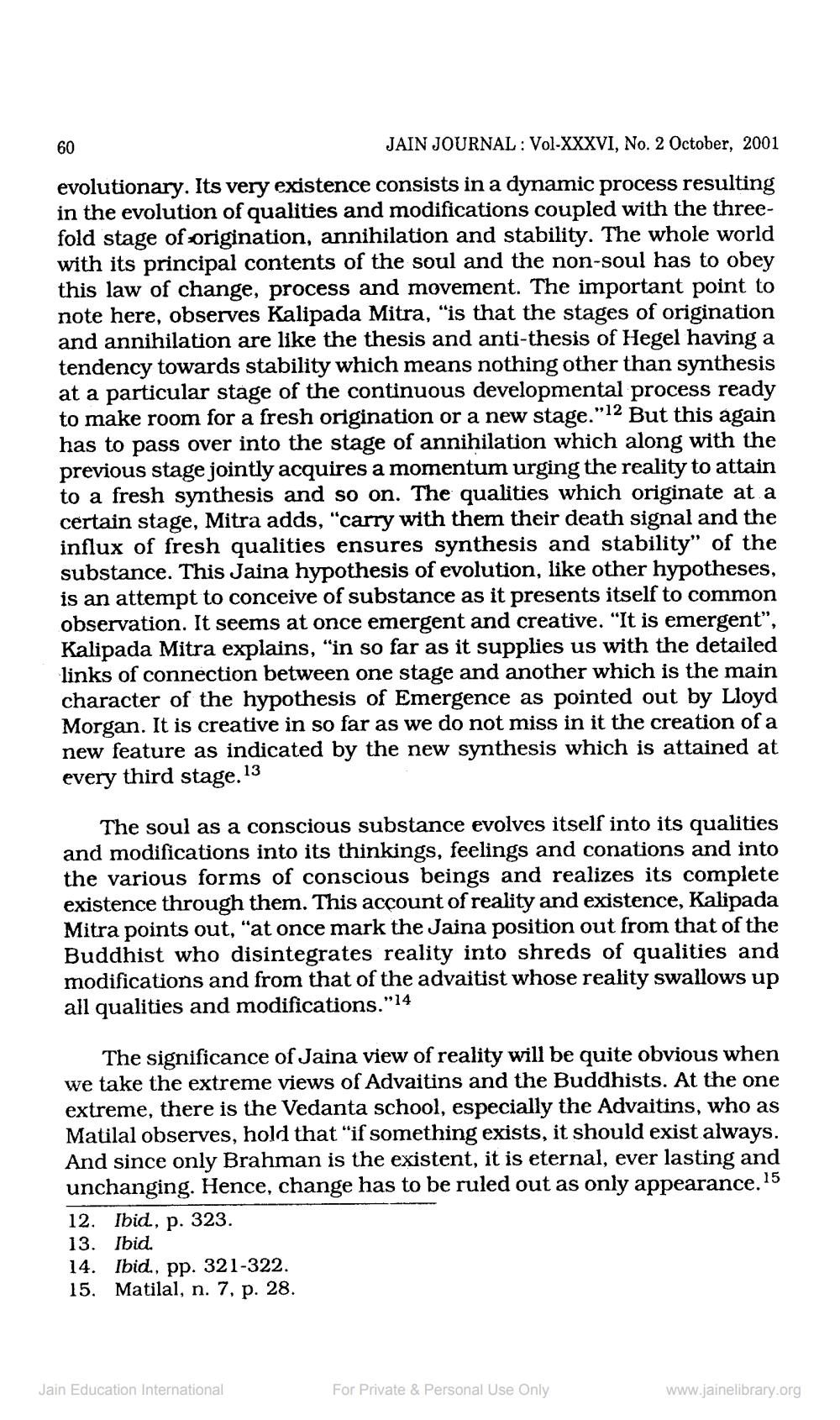Book Title: Jain Journal 2001 10 Author(s): Jain Bhawan Publication Publisher: Jain Bhawan Publication View full book textPage 6
________________ 60 JAIN JOURNAL: Vol-XXXVI, No. 2 October, 2001 evolutionary. Its very existence consists in a dynamic process resulting in the evolution of qualities and modifications coupled with the threefold stage of origination, annihilation and stability. The whole world with its principal contents of the soul and the non-soul has to obey this law of change, process and movement. The important point to note here, observes Kalipada Mitra, “is that the stages of origination and annihilation are like the thesis and anti-thesis of Hegel having a tendency towards stability which means nothing other than synthesis at a particular stage of the continuous developmental process ready to make room for a fresh origination or a new stage."12 But this again has to pass over into the stage of annihilation which along with previous stage jointly acquires a momentum urging the reality to attain to a fresh synthesis and so on. The qualities which originate at a certain stage, Mitra adds, "carry with them their death signal and the influx of fresh qualities ensures synthesis and stability” of the substance. This Jaina hypothesis of evolution, like other hypotheses, is an attempt to conceive of substance as it presents itself to common observation. It seems at once emergent and creative. "It is emergent", Kalipada Mitra explains, “in so far as it supplies us with the detailed links of connection between one stage and another which is the main character of the hypothesis of Emergence as pointed out by Lloyd Morgan. It is creative in so far as we do not miss in it the creation of a new feature as indicated by the new synthesis which is attained at every third stage. 13 The soul as a conscious substance evolves itself into its qualities and modifications into its thinkings, feelings and conations and into the various forms of conscious beings and realizes its complete existence through them. This account of reality and existence, Kalipada Mitra points out, "at once mark the Jaina position out from that of the Buddhist who disintegrates reality into shreds of qualities and modifications and from that of the advaitist whose reality swallows up all qualities and modifications."14 The significance of Jaina view of reality will be quite obvious when we take the extreme views of Advaitins and the Buddhists. At the one extreme, there is the Vedanta school, especially the Advaitins, who as Matilal observes, hold that “if something exists, it should exist always. And since only Brahman is the existent, it is eternal, ever lasting and unchanging. Hence, change has to be ruled out as only appearance. 15 12. Ibid., p. 323. 13. Ibid. 14. Ibid., pp. 321-322. 15. Matilal, n. 7, p. 28. Jain Education International For Private & Personal Use Only www.jainelibrary.orgPage Navigation
1 ... 4 5 6 7 8 9 10 11 12 13 14 15 16 17 18 19 20 21 22 23 24 25 26 27 28 29 30 31 32 33 34 35 36 37 38 39 40 41 42 43 44 45 46 47 48 49
